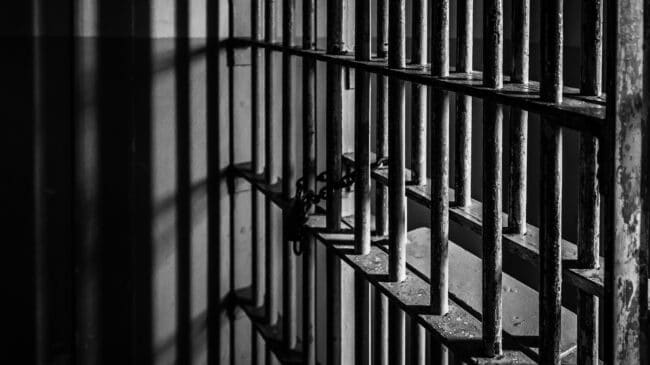In January, Texas death row inmates filed a federal lawsuit accusing the state of violating their federal and constitutional rights by automatically subjecting them to mandatory and indefinite solitary confinement. The lawsuit alleges that all 184 men currently on death row in Texas are confined to their 8-by-12-foot cells for 22-to-24 hours each day and are deprived of human interaction, including medical care and the ability to meet with their attorneys in private.
Solitary confinement may be necessary in some instances, especially as a safety or security precaution, but it should be used rarely, applied fairly, and subject to reasonable constraints. As of 2021, Texas held 3,819 inmates in solitary confinement, euphemistically referred to as “restrictive housing” or “administrative segregation.” Inmates placed in solitary confinement spend an average of five years in isolation.
Texas currently places all male death row inmates in solitary confinement (the lawsuit does not include female death row inmates as they are held in a separate facility and are not subject to the same conditions), but this wasn’t always the case. Before 1999, the Texas Department of Criminal Justice (TDCJ) housed death row prisoners at O.B. Ellis Unit in Huntsville, Texas. At the Ellis Unit, death row inmates were placed in solitary confinement only through individualized risk-based assessments. There, death row inmates could participate in work activities, group activities, and educational programs, and some were even allowed occasional contact visits.
But in 1999, all Texas death row inmates were transferred to the Allan B. Polunsky Unit outside Livingston, Texas, due to overcrowding at the Ellis Unit. TDCJ policy then started requiring all prisoners sentenced to death to be held in solitary confinement indefinitely without any clear security or penological justification. On average, Texas’ 184 death row inmates have spent 17 years and 10 months in solitary confinement.
Texas Department of Criminal Justice policy stipulates that all inmates have the right to access legal counsel. The policy also clearly states that attorney visits should take place in a designated attorney visitation area. While staff members can maintain visual surveillance during visits, the privacy of the visits must be respected. The policy further states that legal materials, including correspondence belonging to an inmate, are confidential and should not be read by staff members.
The plaintiffs claim TDCJ’s policy of automatic solitary confinement inherently deprives them of these statutory protections and their constitutional right to legal counsel. The lawsuit claims that it takes weeks for inmates to schedule meetings with their attorneys. When meetings do occur, the suit states they take place in general visitation areas in the presence of other prisoners, attorney and non-attorney visitors, and correctional staff.
According to Death Penalty Information Center data, 191 people have been exonerated while awaiting execution nationwide since 1973. Exonerations have resulted from exculpatory DNA evidence and the uncovering of procedural failures, false witness statements, misleading evidence, and official misconduct. These failures within the system underscore the importance of ensuring inmates have sufficient access to legal counsel.
In Texas, just 16 death row inmates have been exonerated since 1985. Texas executed 579 people over that same period. Texas’ low number of exonerations relative to other states might suggest that many wrongfully convicted individuals have been unable to appeal their convictions successfully.
The suit also alleges that attorney and non-attorney visitors often sit “shoulder to shoulder,” communicating through “thick-pane glass windows” with broken phone equipment. These conditions, the plaintiffs say, restrict access to counsel and increase the risk of private conversations being overheard or recorded. Inmates say they sometimes fail to receive legal correspondence, and in other cases, correctional staff may open legal correspondence without the inmates present.
Inadequate access to medical care and the potential outcome of a medical emergency in isolation are also critical components of the lawsuit. Although many inmates suffer physical and psychological damage during prolonged solitary confinement, the suit says they must wait hours, sometimes weeks, to receive medical attention. When inmates are finally able to see a medical professional, they claim the visit is conducted through their cell door, allowing no privacy between them and their healthcare providers.
The United Nations warns, “Considering the severe mental pain or suffering solitary confinement (prolonged for more than 15 consecutive days) may cause, it can amount to torture or cruel, inhumane or degrading treatment or punishment.”
Solitary confinement can also cause lasting psychological problems, including impulse control issues, post-traumatic stress disorder (PTSD), psychosis, paranoia, and others. Research suggests prolonged solitary confinement does not significantly improve facility safety or reduce misconduct. However, inmates subjected to solitary confinement are at greater risk of suicide while incarcerated and after returning to the community.
Managing inmates and maintaining safety within correctional facilities is challenging and complex. Solitary confinement may be necessary in specific instances, but the recent lawsuit raises important questions about the Texas Department of Criminal Justice’s practices. At a minimum, death row inmates must have sufficient access to legal counsel in a designated private meeting area.
Broader changes in inmate management should also be implemented to end the current practice of automatically isolating all death row inmates and instead rely on individualized risk assessments. A review of the Texas Department of Criminal Justice’s practices related to inmate management and restrictive segregation would be a good place to start.
